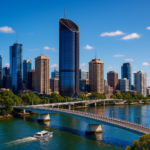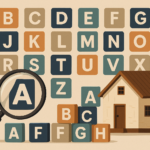Landscape design is absolutely crucial for property owners to consider. A home’s exterior can increase property value, improve curb appeal, impress potential buyers, and, notably, make living in a home all the more enjoyable. The importance of curbside appeal has been written about in depth. There is no denying that first impressions matter in the selling, purchasing, and valuation realms of the property market. But getting it right is not as simple as throwing money at it.

Tip: You need to consider the strengths of your home and area and play to them, while harnessing refined styles to bring together a design that truly makes a strong impression.
Across Australia, five landscape designs have gained widespread popularity for their practicality and visual appeal. In this guide, we will discuss the elements of each design, empowering you to choose the landscaping style that best suits your home and lifestyle and adds value to your property in the eyes of a broad range of buyers.
Contemporary and Modern Landscape Design
This design is incredibly common among modern builds. The contemporary or modern style is unmistakable – clean lines, minimalist gardening, geometric hardscapes, and neutral colour palettes. There’s a clear focus on function over form, making it a practical and efficient choice for many Australians. Those who opt for this style typically match it with a low-maintenance landscape, featuring drought-resistant plants, durable pavement, and smooth decking. Contemporary landscaping usually features modern materials, such as concrete and metal – think matte Aluminium batten fencing over traditional white timber fences.
This style is sleek, architectural, and free from visual clutter, but that doesn’t mean it’s cold and uninviting. Modern landscape designs often contrast organic materials to create a special atmosphere that is soaked in earthy elements while remaining clean and easy to maintain. They may include modular outdoor furniture, steel or concrete fire pits, and built-in lighting along walkways so that guests can enjoy a soothing, understated environment.

Coastal Landscape Design
Inspired by the world-famous Australian beachside lifestyle, this design is breezy and relaxed. Light colours, open layouts, and salt-tolerant plants – such as lavender, seaside daisies, and stick yucca – are staples in coastal landscape design. Native grasses and succulents are also common additions. You may see design elements that appear to have been weathered by the sea air, even in homes far from the coast. This may include driftwood accents, crushed shells in pathways, or sandstone.
The coastal landscape design is all about creating a relaxing atmosphere. The furniture, often in white or pale finishes, is durable yet charming, and drenched by the sun. Guests will enjoy feeling relaxed as they savour the sensation of a sea breeze while dining, capturing the essence of Australia’s iconic coast and making them feel calm and at ease.

Native and Australian Bush Landscape Design
This design embodies and celebrates the natural beauty of Australia, drawing its inspiration from local flora and natural forms. Those who choose a native landscape often believe in sustainability, prioritising fire safety, or creating safe habitats for Australian birds and insects. Gardens often feature indigenous plants, such as kangaroo paws, bottlebrush, and banksia. These plants offer numerous benefits to homeowners and the environment, ranging from increased water efficiency to reduced soil erosion.
Design choices tend to be looser and less formal. The Australian bush landscape design often features curved paths, natural materials, and elements that blend seamlessly into the surrounding nature rather than dominating it. The result is a landscape that feels authentically connected to and in harmony with the country surrounding it.

Formal and Traditional Landscape Design
Timelessness is key to maintaining and improving property value. The traditional landscape design is timeless and elegant, with a clear European influence, making it a popular choice for heritage homes. In this design, you’ll see an emphasis on symmetry, order, and strength. Hedges are carefully manicured, lawns are well-maintained, and gardens often feature grand centrepieces like rose bushes or ornamental trees. Materials used in this design are romantic – think brick walls with ivy, cobblestone pathways, ornate fountains, and iron accents.
This style is perfect for hosting garden parties or simply boosting the curb appeal of a property. It’s the ideal choice for those who appreciate classic beauty and a sense of tradition that stands the test of time and will never alienate future buyers.
Tropical and Subtropical Landscape Design
Those living in the humid, warm climates of northern Australia will appreciate this landscaping style, born to thrive in this region. The tropical and subtropical design uses the dense foliage of palms and ferns to create an atmosphere similar to that of a private resort. Unlike the coastal landscape design, this style prioritises shade, moisture, and a more wild and chaotic arrangement. Pools are a common feature in this landscape, with glass pool fencing enhancing both the aesthetic appeal and safety of the swimming area.
Bamboo and natural stone elements fit this design beautifully. Winding paths, dark timber furniture, and subtle walkway lighting lend themselves to a lush environment guests will feel immediately immersed in, allowing them to relax and unwind in peace.

Key Takeaways
From the structured modern style to the lush freedom of the tropical design, each of these five common landscape design styles brings something unique to Australian properties. No matter your style, selecting foliage and other design elements that work together in harmony can result in a home exterior that feels cohesive and appeals to potential buyers.
- Contemporary and modern landscape designs focus on function, neutral palettes, and minimalism.
- Coastal landscape designs emphasise relaxation, salt-resistant plants, and beach-inspired elements.
- Native and bush landscape designs embrace Australian flora and sustainability.
- Formal and traditional landscape designs draw inspiration from European elegance.
- Tropical and subtropical landscape designs capture the lushness and tranquillity typical of a rainforest environment.














